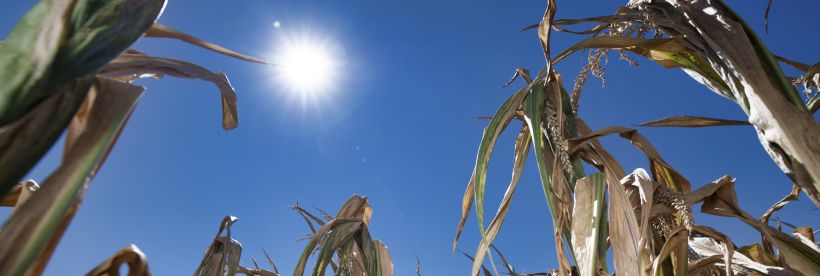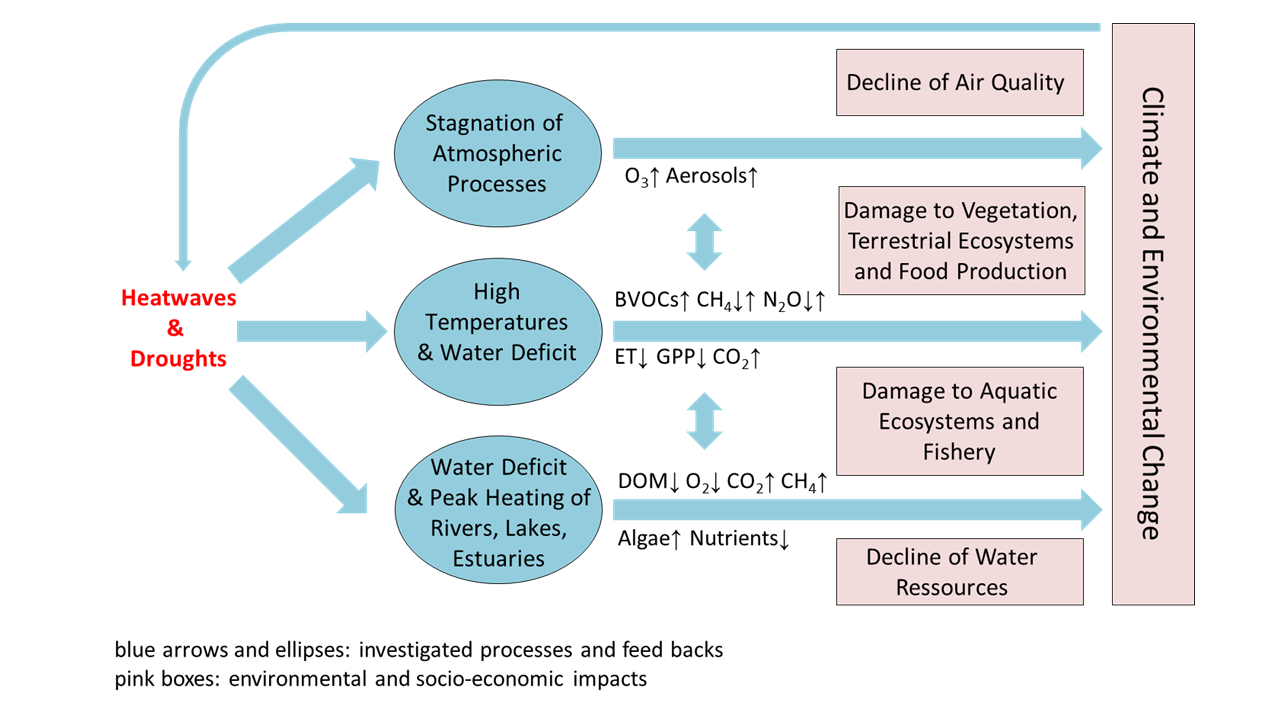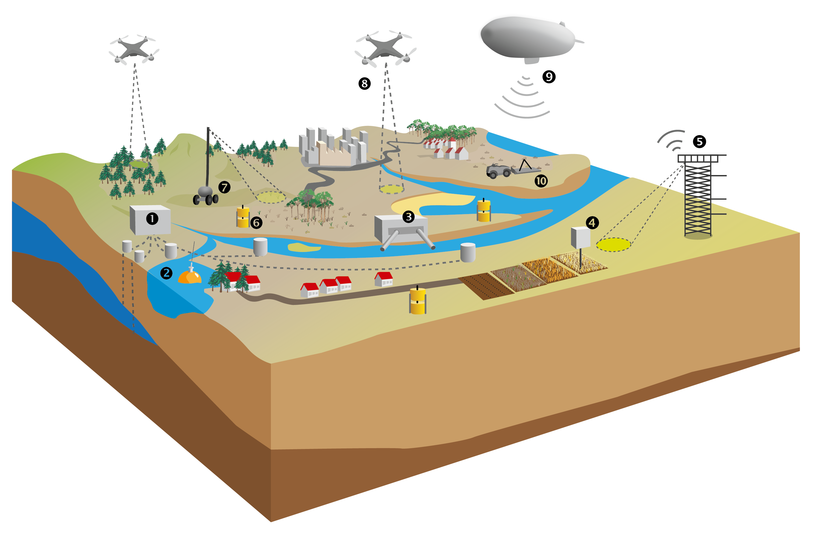
Heatwaves and Droughts
Ten out of the last 20 years have seen extreme heatwaves and droughts around the world – almost all of which have also been observed in Europe. Their devastating effects on the functioning of terrestrial and aquatic environments led to an increased vulnerability that lasted far beyond the duration of the individual events, including loss of agricultural productivity, unprecedented tree mortality, and widespread algal blooms in rivers, lakes and reservoirs. Record-breaking temperatures claimed many lives, and air pollution, most evident in ozone limit exceedances, further threatened human health. With future climate scenarios predicting a further increase in heatwaves and droughts both globally and across Europe, a better understanding of their evolution and impacts is essential for adaptation and protection measures.
Heatwaves and droughts initiate complex event chains that simultaneously affect the atmosphere, the land surface, and aquatic systems. To investigate the impact of prolonged heat and drought periods on our ecosystems, three strands of event chains are the focus of MOSES campaigns:
- In the atmosphere, heatwaves cause a decline in air quality due to changes in atmospheric dynamics, photochemistry and processes at the biosphere/atmosphere interface.
- On the land surface, heatwaves and droughts impair ecosystem functioning; their multiple recurrences can lead to irreversible changes that limit ecosystem services and resilience.
- Heatwaves and droughts affect the quantity and quality of water resources and aquatic ecosystems, causing for example, algal blooms which can lead to oxygen depletion or toxicity and thus to enhanced mortality of aquatic biota.
 Schematic diagram of event chains triggered by heatwaves: (1) Peak heating in rivers and lakes lead to decreased flow regimes and increasing algea concentrations impacting negatively water quality; (2) heatwaves lead to the occurrence of drought periods affecting ecosystems functioning such as gross primary production (GPP), evapotranspiration (ET) and emissions of biogenic volatile organic compounds and (3) they lead to increased concentrations in ozone and aerosols negatively impacting air quality. The arrows denote either an increase or decrease in magnitude.
Schematic diagram of event chains triggered by heatwaves: (1) Peak heating in rivers and lakes lead to decreased flow regimes and increasing algea concentrations impacting negatively water quality; (2) heatwaves lead to the occurrence of drought periods affecting ecosystems functioning such as gross primary production (GPP), evapotranspiration (ET) and emissions of biogenic volatile organic compounds and (3) they lead to increased concentrations in ozone and aerosols negatively impacting air quality. The arrows denote either an increase or decrease in magnitude.
Highly mobile and interoperable measuring systems are required to monitor the multiple and interconnected processes of the different environmental systems. Such a concerted observation campaign for heatwaves and droughts is illustrated in the block diagram.
 MOSES observation systems for heatwaves. Soil and water quality module: functional microbiome changes measured by online metagenomics and metabolomics (1), buoy with multi-parameter sensors (2) and mobile mesocosms for water quality (3); land-atmosphere fluxes module: long-term quantification of GHG fluxes and their isotopic composition with stationary systems (5), event based quantification of GHG fluxes and their isotopic composition with mobile systems (7); atmospheric chemistry module: distribution of air pollutants measured on small drones (8) and a zeppelin (9); biota module: drones equipped with hyperspectral and IR sensors to characterize vegetation canopy (8); water balance module: soil moisture determination using mobile Cosmic Ray Sensors (4), gravimeters (6) and mobile hydrogeophysics to determine subsurface soil properties (10).
MOSES observation systems for heatwaves. Soil and water quality module: functional microbiome changes measured by online metagenomics and metabolomics (1), buoy with multi-parameter sensors (2) and mobile mesocosms for water quality (3); land-atmosphere fluxes module: long-term quantification of GHG fluxes and their isotopic composition with stationary systems (5), event based quantification of GHG fluxes and their isotopic composition with mobile systems (7); atmospheric chemistry module: distribution of air pollutants measured on small drones (8) and a zeppelin (9); biota module: drones equipped with hyperspectral and IR sensors to characterize vegetation canopy (8); water balance module: soil moisture determination using mobile Cosmic Ray Sensors (4), gravimeters (6) and mobile hydrogeophysics to determine subsurface soil properties (10).
The heatwaves and droughts campaigns started in 2018 as part of the implementation period. They were conducted during the summer droughts from 2018 until 2020 in some of the most affected regions in Germany. From 2022 onwards, the campaigns are carried out as part of the MOSES operating phase.
Evolution and Impacts of Heatwaves and Droughts in Terrestrial Systems
Prof. Nicolas Brüggemann, FZJ | n.brueggemann@fz-juelich.de
Dr. Harald Saathoff, KIT | harald.saathoff@kit.edu
Evolution and Impacts of Low Flows and Floods in Aquatic Systems
Prof. Dietrich Borchardt, UFZ | dietrich.borchardt@ufz.de
Dr. Norbert Kamjunke, UFZ | norbert.kamjunke@ufz.de
Prof. Philipp Fischer, AWI | philipp.fischer@awi.de

